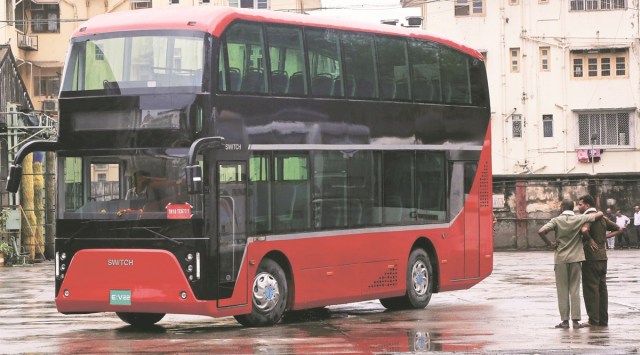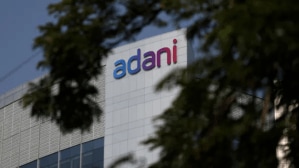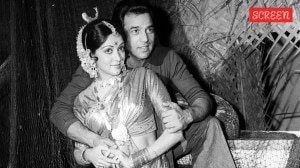BEST to induct AC, double-decker e-bus today
The motorised red buses were first introduced to Mumbai in 1937 by the British, and modelled after London's double-decker buses.
 The first electric bus will be unveiled on Thursday in the presence of Union Transport Minister Nitin Gadkari here. (Express photo by Ganesh Shirsekar)
The first electric bus will be unveiled on Thursday in the presence of Union Transport Minister Nitin Gadkari here. (Express photo by Ganesh Shirsekar)THE RED double-decker bus is one of the most iconic features of Mumbai and a distinct part of the city’s imagery. Even as the last of 48 motorised buses will be phased out by 2023, Brihanmumbai Electric Supply and Transport (BEST) undertaking is inducting the country’s first air-conditioned, double-decker e-buses into the fleet. The first electric bus will be unveiled on Thursday in the presence of Union Transport Minister Nitin Gadkari here. The first lot will have 15 such buses which will be operational in a month’s time.
The motorised red buses were first introduced to Mumbai in 1937 by the British, and modelled after London’s double-decker buses. These plied 26 routes across the city and became synonymous with the city in the 60s right up to the 90s.
“It was a more peaceful city back then, and double-decker buses were attractive, not just as a mode of transport, but as an evening outing for Mumbaikars, and a way for tourists to explore the city. And if you got the front row seats of the top deck, you would be treated to a beautiful view of the city,” said city-based historian Deepak Rao. At the peak of their popularity, there were about 900 operational double-decker buses in Mumbai.

When they were first introduced, the double-decker bus routes were named after the English alphabet. However, as the city expanded and more routes were added, they were renamed with numbers. And routes 123 and 130 gained immense popularity among tourists and Mumbaikars alike.
Route 123, or the old route ‘C’, operated between R C Church in Colaba up to Tardeo, and traversed through much of the scenic locations of South Mumbai, starting from Colaba Causeway, Regal Cinema, Flora Fountain, Marine Drive, Girgaum Chowpatty, and ending at Tardeo. “Just imagine the view on this route, that too from the height of the top deck of the double-decker. This route became popular among tourists and first-timers moving to Mumbai and looking to soak in its charm. Single-decker buses don’t give you that experience,” Rao said.
The other popular route, 130, covered areas of Fort market, Crawford market, Pydhonie, and showed a different side of the city, the “one of brothels and night-life”, “How else would tourists or someone new to the city experience these scenes if they didn’t want to participate in them?” Rao said.
Auto-rickshaws began to ply in the suburbs only by 1970, and by then, double-decker buses had gained immense popularity in the suburbs as a popular mode of transport. A senior BEST official said, “There was a double-decker bus between Santacruz railway station and Juhu Church, which always operated at full capacity as they accommodate twice the number of people.”
However, BEST began to phase out these buses, as their spare parts were not easily available, were more expensive to acquire and difficult to transport due to their weight. BEST also said that double-deckers consumed more fuel and were becoming financially unviable. A senior BEST official said, “As they were introduced during British rule, they were all supplied by British manufacturers such as Daimler, AEC (Associated Equipment Company), and Leyland motors. It was not until 1955 that Indian company Ashok Leyland began manufacturing them.”
It has planned to get 900 such buses on a wet lease basis and will be commissioned in a phased manner. “This is bringing back the nostalgia and the functionality, and is a great idea. Double-decker buses accomodate more people in the same space and hence their utility value is higher. Moreover, these buses have a sense of romance associated with them. Like London, Mumbai also sees them as an icon. I have fond childhood memories of Sunday morning rides in these buses. The view from the top deck is a treat for any child,” city-based transport expert Ashok Datar said.







